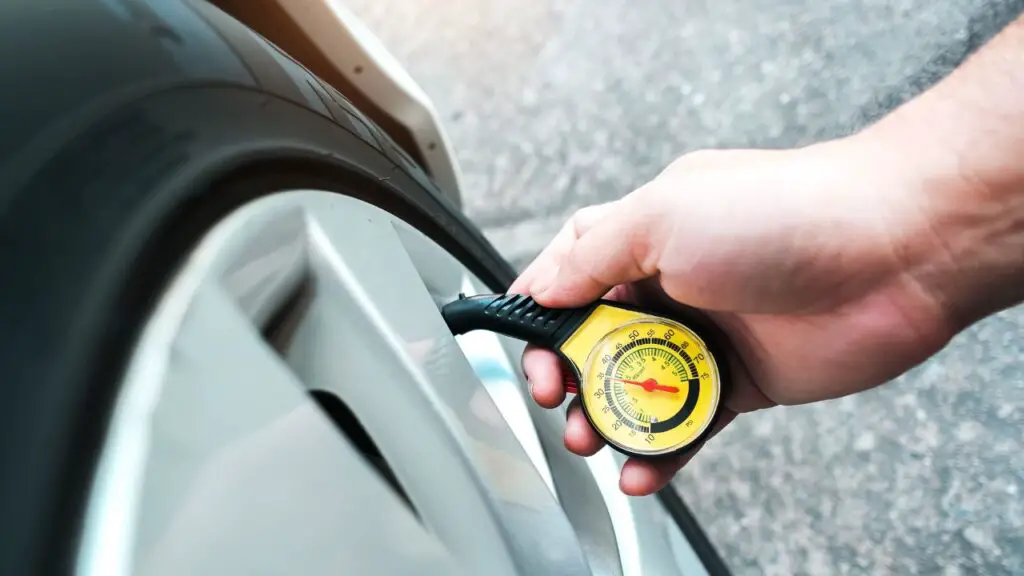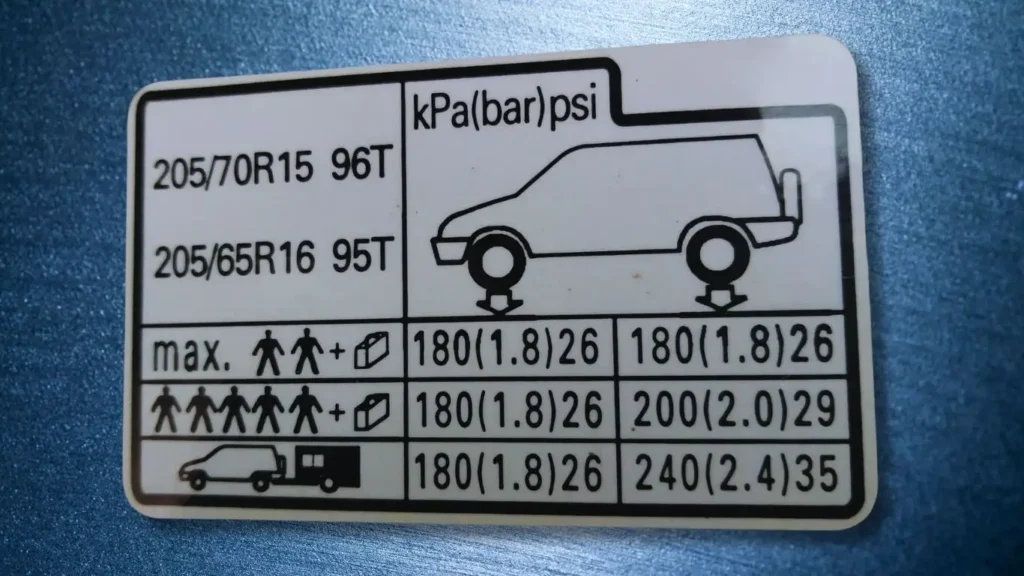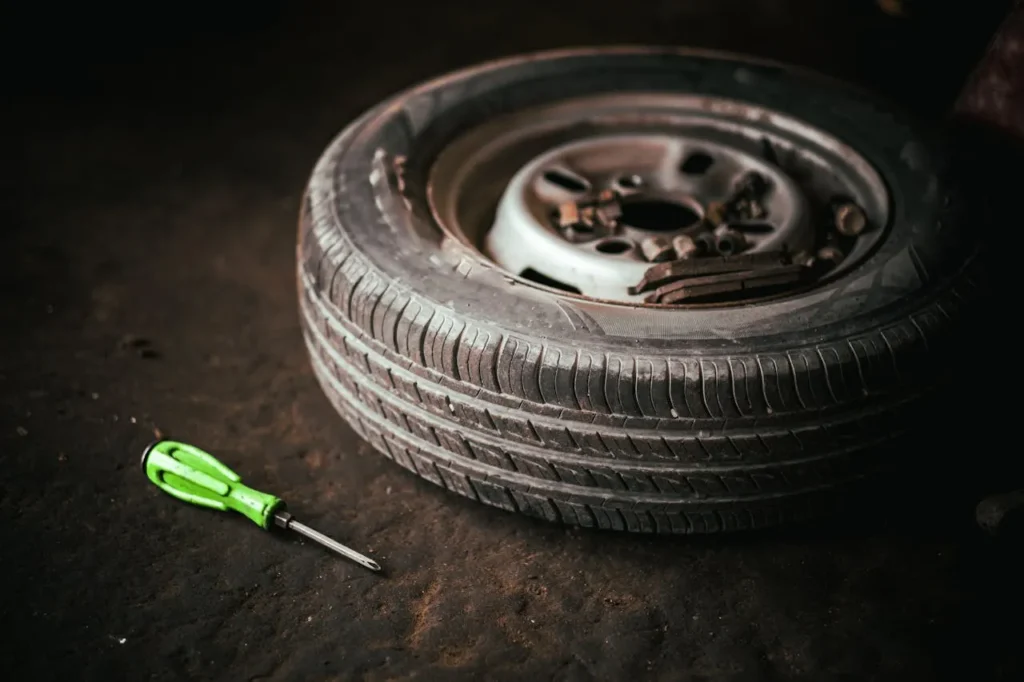Honda CR-V Tire Pressure Guide (All Model year)
One day, you notice your CR-V has a flat tire, and the warning light on the dashboard lets you know that the tire pressure is not correct.
Luckily, you have a tire inflator at home, so you can fill the tires without having to drive to the nearest shop. But then you start wondering how much pressure you should actually put in your CR-V’s tires.
Tire pressure might not always seem like a big deal, but it actually plays an important role in safety, comfort, fuel economy, and tire longevity.
The recommended tire pressure for a Honda CR-V depends on the tire size and driving conditions.
In this article, I will go over the recommended tire pressure for different CR-V model years and driving scenarios. I will also explain how to check and adjust tire pressure, the effects of incorrect pressure, and other important details.

Honda CR-V Recommended Tire Pressure By Model Year
To make it easier to find the tire pressure specifications for your CR-V, I will organize the information by model year.
Disclaimer: Tire pressure can vary depending on the number of passengers and the amount of cargo your CR-V is carrying. The tire pressure information in the table below is based on normal driving conditions and is ideal for daily use. If you are driving with a heavy load or towing, we will cover that in more detail later.
| Model Year | Tire Pressure (Front/Rear) |
|---|---|
| 2025 | 17″ wheel: 33/32 psi 18″ wheel: 35/32 psi 19″ wheel: 30/30 psi |
| 2024 | 17″ wheel: 33/32 psi 18″ wheel: 35/32 psi 19″ wheel: 30/30 psi |
| 2023 | 17″ wheel: 33/32 psi 18″ wheel: 35/32 psi 19″ wheel: 30/30 psi |
| 2022 | 17″ wheel: 33/32 psi 18″ wheel: 35/32 psi 19″ wheel: 30/30 psi |
| 2021 | 17″ wheel: 33/32 psi 18″ wheel: 35/32 psi 19″ wheel: 30/30 psi |
| 2020 | 17″ wheel: 33/32 psi 18″ wheel: 35/32 psi 19″ wheel: 30/30 psi |
| 2019 | 17″ wheel: 32/30 psi 18″ wheel: 33/30 psi |
| 2018 | 17″ wheel: 32/30 psi 18″ wheel: 33/30 psi |
| 2017 | 17″ wheel: 32/30 psi 18″ wheel: 33/30 psi |
| 2016 | 16″ wheel: 32/32 psi 17″ wheel: 33/33 psi 18″ wheel: 32/30 psi |
| 2015 | 16″ wheel: 32/32 psi 17″ wheel: 33/33 psi 18″ wheel: 32/30 psi |
| 2014 | 16″ wheel: 32/32 psi 17″ wheel: 30/30 psi |
| 2013 | 16″ wheel: 32/32 psi 17″ wheel: 30/30 psi |
| 2012 | 16″ wheel: 32/32 psi 17″ wheel: 31/31 psi |
| 2011 | 30/30 psi |
| 2010 | 30/30 psi |
| 2009 | 30/30 psi |
| 2008 | 30/30 psi |
| 2007 | 30/30 psi |
| 2006 | 29/29 psi |
| 2005 | 29/29 psi |
| 2004 | 26/26 psi |
| 2003 | 26/26 psi |
| 2002 | 26/26 psi |
| 2001 | 26/26 psi |
| 2000 | 26/26 psi |
| 1999 | 26/26 psi* |
| 1998 | 26/26 psi * |
| 1997 | 26/26 psi* |
* Can’t confirm the data, please refer your owner manual
As I mentioned earlier, tire pressure can vary based on several factors, including the number of passengers and the weight of your luggage.
If you plan to tow a trailer or carry a heavy load, you will need to add more air to your CR-V’s tires, especially the rear ones.
The exact tire pressure specifications can be found on the information placard located on the driver’s side door jamb.

This placard provides the recommended tire pressure for different driving conditions. In general, if you are carrying more passengers or cargo, increasing the tire pressure by a few psi is recommended.
Checking and Adjusting Honda CR-V Tire Pressure
Even though your CR-V is equipped with a TPMS that alerts you when the tires are underinflated, manually checking the pressure is a good idea, especially before a trip or when carrying heavier loads than usual.
You can check the tire pressure at home using a few simple tools, including:
- A tire pressure gauge
- A tire inflator
- A clean cloth
Along with having the right tools, it is important to check the tire pressure at the right time. The best time to do this is when the tires are cold, preferably before driving or a few hours after parking. Avoid checking the pressure right after a long drive, as heat can cause inaccurate readings.
Checking Tire Pressure
- Take off the valve cap from the tire.
- Firmly place the pressure gauge onto the valve stem.
- Check the reading on the gauge.
- Compare the measured pressure with the recommended level for your CR-V.
- Repeat the steps for all tires, including the spare if your vehicle has one.
Adjusting Tire Pressure
- If the tire pressure is too low, use a tire inflator to add air until it reaches the recommended level. Check the pressure again with the gauge.
- If the pressure is too high, press the pin in the center of the valve stem to release air gradually. Keep checking with the gauge until it matches the recommended level.
- If you are using an electric pump, the process is even easier. Simply set the desired tire pressure on the inflator and turn it on. The pump will automatically stop once the tire reaches the correct pressure.
- Secure the valve cap back onto the tire.
Helpful Tips
About two years ago, I had a problem where my car tires would slowly lose air pressure when not in use. This often led to unexpected flat tires while traveling. From that experience, I picked up a few valuable lessons.
Here are some tire pressure tips based on what I learned.
- Check tire pressure regularly, at least once a month or before a long trip. A quick visual check of all four tires can help—if any look flatter than usual, use a tire pressure gauge to confirm.
- If your CR-V’s tires lose air after sitting for more than a week, have them inspected at a tire shop. While the chances of a leak are low, it is still worth checking.
- Do not rely solely on the TPMS. The system only warns you when the pressure drops significantly below the recommended level, but even a small drop of 1 to 2 psi can affect ride comfort.
The Risk of Improper Tire Pressure
Driving with tire pressure that is too low or too high can be risky, especially if it goes unchecked for too long. In an emergency, you might be able to get away with it for a short distance, but it is always best to inflate your tires as soon as possible.
The manufacturer’s recommended tire pressure is there for a reason, it helps keep you safe and extends the life of your tires. Ignoring it can lead to several problems, including:
- Premature tire wear: Overinflation causes the center of the tread to wear out faster, while underinflation leads to excessive wear on the edges. As the tread wears down, the tire loses grip, which can affect handling and safety.
- Fuel consumption: Driving with underinflated tires can also reduce fuel efficiency. I learned this the hard way when I did not pay much attention to tire pressure, and I definitely regretted it.
- Blowout: Driving on underinflated tires can weaken the tire structure, increasing the risk of a blowout.
- Aquaplaning: Tire pressure that is lower than recommended can increase the risk of aquaplaning because the tires lose grip on wet surfaces.
After considering the risks above, you can see why maintaining the right tire pressure is so important. To keep your tires in top condition, here are a few simple tips you can follow.
Tire Maintenance Tips

Tire Rotation
Rotating your tires regularly helps them wear evenly, which extends their lifespan.
I learned this the hard way with my front-wheel-drive van. I forgot to rotate the tires for over two years, and as a result, the front ones wore out completely while the rear ones were still in great shape. I had to replace the front tires much sooner than expected.
To avoid this, make sure to rotate your tires every 5,000 to 7,000 miles or whenever you change the engine oil.
Balance your wheels
This next tip requires a technician’s help. You should take your vehicle to a tire shop and have the wheels balanced every 15,000 miles. This helps ensure that your wheels stay properly balanced, which can improve handling and prevent uneven tire wear.
Wheel Alignment
You can easily get a wheel alignment at your nearest tire shop, and it’s usually very affordable. This ensures that your tires stay properly aligned with the steering wheel, helping to improve handling and prevent uneven tire wear.
Keep it Clean
Last but not least, keep your tires clean. Make sure to wash off any mud or dirt that sticks to them right away. Letting dirt sit for too long can cause the tires to become brittle and eventually break.
Frequently Asked Questions
Conclusion
Maintaining the correct tire pressure for your Honda CR-V is crucial for safety, comfort, fuel efficiency, and tire longevity.
This guide provides the recommended pressures for various CR-V model years and explains how to check and adjust them.
Remember to consult your owner’s manual or door placard for the most accurate information and make regular checks to ensure optimal performance and safety on the road.
If you have any suggestions, questions, or want to share your experience with tire pressure on your Honda CR-V, feel free to leave a comment below. I, along with thousands of readers, would love to hear from you.
